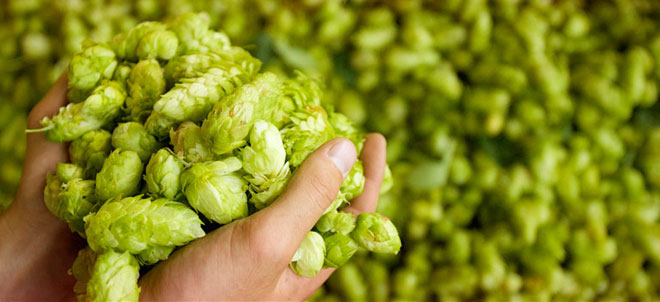Every craft beer aficionado has opinions on their hop experience. Some enjoy an IPA with a palate wrecking experience while others prefer to run towards the malts and their deep flavors. In Beer 101, we discussed the basic brewing process, including the addition of hops. In today’s edition of the Foundations of Beer, we discuss what hops are and how they affect the brew.
The hop is a flower that is primarily used in beer, other beverages, and herbal medicine. The hop is important because it balances out the sweet of the malt that is added to the brewing concoction. The component within the hop that influences the beer the most is its alpha acids. During the wort boiling, the alpha acid atoms become rearranged and change to iso-alpha acids. The longer the acid boils, the more of the iso-alpha acids are introduced into the brew, strengthening the bitterness. Additionally, hops help stop undesired bacteria from growing, thus preserving the beer.
One way to ruin these hops is to expose them to the sun. One of the worst ways a person can treat a beer, besides not drinking it, is to expose it to too much sunlight. Too much exposure to sun causes it to become “lightstruck.” The term “lightstruck” is a fancy way of saying that the sun has altered the iso-alpha acids in the beer causing them to “skunk.”
A lot of beer can be found in brown bottles and that’s for good reason. The brown glass helps to prevent sun from penetrating the bottle and skunking the beer. Since skunking is so detrimental to the beer many breweries have begun to can their beers to help eliminate the sun as a threat to the brew. There’s a common myth in the beer world that changing a beer’s temperature will cause it to become “skunky.” It’s more likely that the reason the beer warmed was because it was exposed to sun and that the resulting UV exposure is responsible for the change in flavor and aroma.
Hops are found in all beer, but there is a handy way to determine just how many hops are in the beer before drinking it. Many breweries provide consumers with a measurement known as IBU’s or International Bittering Units. IBU’s measure the parts per million of Iso-alpha acids found in the brew. However, there is a degree of relativity involved with the IBU. Malts, which are also found in beer, create a sweet taste that directly softens the “bite” of hops. A beer that is light on malt or any additional flavorings and has an IBU rating of 20 will be quite bitter. However, if a beer has an IBU rating of 75 but is filled with a heavy dose of malt or flavorings such as citrus, the bitterness may be masked by the other ingredients.
The hops are my favorite ingredient in the beer. The more hop, the more bitter, the better the drink! Not everyone is as fond of the almighty hop however, so at the Malted Meeple we keep a balanced selection of beers. On the hoppier side, Fat Head’s Head Hunter is a capstone in our draught library, which I highly recommend. The next time you stop in to play a board game, order an IPA and think about all those delicious bittering acids!
Dana Miller has embraced the nerd culture his whole life. Starting from a passion for collectible X-Men cards to feverishly saving the princess from Bowser on his NES. He has managed game rooms, blockbusters and restaurants. He loves cooperative and team based activities, learning new board games, comic book films, League of Legends, and trying different craft beers.

